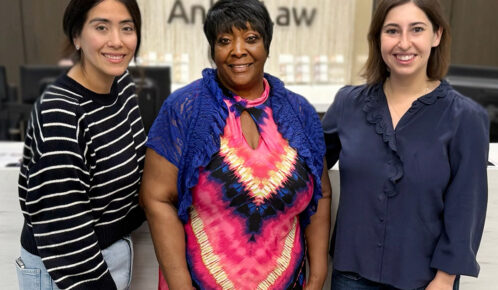The first step when injured by a defective product is to seek medical treatment. Next, injured victims should collect evidence of the product defect and their injuries. Finally, people injured by defective products should retain the help of a product liability attorney. An attorney can help hold the liable party accountable and recover fair compensation on behalf of injured victims.
Table of Contents

What Qualifies as a Defective Product?
A defective product is a product that does not work to the intended or implied specifications. There are three types of product defects. These include design, manufacturing, or marketing defects. Design defects are defects within the design of a product that deem the use of the product to be unsafe, potentially causing harm. Manufacturing defects occur when the product was manufactured in a way that deviates from a safe design, thus creating a hazard. Marketing defects refer to the product not having a proper label with a warning to allow for safe use of the product, or a failure to warn consumers of potential hazards the product presents.
With any of these three types of product defects, the consumer who was injured or a person who died has recourse for the damages caused. The designer, manufacturer, distributor, importer, or seller can all be held responsible for a defective product. Where in the manufacturing or distribution process the defect occurred influences who can be held responsible for the injury or death. To better determine who is responsible, it is best to look at the defective product and determine the nature of the defect. A product liability lawyer can help claimants determine who is liable for their injury.
What Makes a Product Defect Dangerous to Consumers?
Any product can be harmful to the user when it is not working in alignment with its intended purpose. A user can purchase a product and attempt to use it correctly, but if there is a defect, it can cause injury or harm. Defects become harmful when they are present in pharmaceuticals, safety equipment, children’s toys/products, defective medical devices, and other household and vehicle products.
Pharmaceuticals can cause injury or death, and the company can be held liable if the information provided did not indicate a specific injury or death could occur. The company is responsible for letting the user know the potential side effects or injuries that can happen when using the product. Product liability claims involving children’s toys or products are different because a serious injury does not have to occur. If any child has a minor injury from a toy or product, that can lead to a product being deemed defective. Defective medical devices can exacerbate existing injuries or cause additional injuries. Defective vehicle parts can cause serious injuries when a motor vehicle accident occurs.
Due to the potential injury or death that a defective product can cause, victims can recover damages through a lawsuit. There are two primary categories to receive compensation under economic and non-economic damages. Recoverable damages in a product liability lawsuit include past and future medical expenses, lost wages, loss of future income, household services, pain and suffering, emotional distress, loss of enjoyment of life, permanent disability, and disfigurement. Additionally, punitive damages can be sought when the liable party was grossly negligent, which is intended to punish the defendant.
Taking the First Steps When Injured by a Defective Product
The first step to take when injured by a defective product is to seek medical attention for your injuries. This not only helps facilitate your recovery but also contributes crucial evidence to your claim. A medical provider can create records documenting your injuries, and the need for medical attention helps support your claims that your injuries are serious.
Once you have sought medical care, further evidence should be gathered to support your claim. This includes images of the defective product or the accident scene, medical records and bills, eyewitness accounts, and, in some cases, preserving the defective product as is. Writing down a detailed account of what happened as soon as possible will also help preserve your memory of the incident.
Critical Additional Steps to Take After a Defective Product Causes an Injury
The next critical step in a product liability claim is to secure the help of an attorney. An attorney will advise you on the next steps to take to ensure the best possible outcome for your situation. An attorney will also help you determine how to file your product liability case.
While it can be frustrating to be a victim of a defective product, remember that posting to social media is a public domain and therefore certain posts can be harmful to your case. It is best to keep information between your doctor and attorney.
Types of Product Liability Cases
There are two types of cases that can be brought forth for a defective products case, one is where the plaintiff sues the defendant directly. This means the injured party or the deceased family sues the manufacturer directly. The other is a class action lawsuit. A class action lawsuit allows for multiple plaintiffs to sue a defendant as a group.
There are three ways to hold the liable party accountable for a defective product. The first is Negligence. Those responsible for creating and marketing a product owe consumers a standard of care. When negligence is present, it establishes that the manufacturer, designer, or marketer knew or should have known that the product was not safe for use or that a hazard was present. In negligence cases, the liable party failed to meet requirements or obligations to consumers that protect them from harm.
The second legal method to establish liability is strict liability. Strict liability means obligations for safety were not met. This liability makes the party who created the product responsible for damages caused by the injury, regardless of preventative actions taken.
The third and last avenue for legal recourse is a breach of warranty. Breach of warranty refers to the failure to uphold warranties involved during the sale or distribution of a product. The warranties are usually outlined in the product manual or relevant handouts. In product liability cases, this typically applies when a product is not fit for its intended purpose. An attorney will be able to determine which type of product liability case you have.
Who Can Be Held Liable in a Product Liability Claim?
There are three parties that are typically held accountable for creating and distributing a defective product. These are the manufacturer, designers, and sellers. The most common party to be sued is the manufacturer. This is because it is assumed the design of the product is reasonable, but an error existed during manufacturing, leading to a defective product being created. Whichever party that is being held responsible is determined by the type of product defect present.
Proving Liability
In a lawsuit, the courts hear both sides of the case and make a decision. However, with product liability cases, the courts may opt to use a testing system to determine liability. The first test is the risk-utility test. This test determines if the product’s utility or usage outweighs the inherent risk of harm. For the product to pass the risk-utility test, its intended purpose must have a higher value than the damages it causes.
The second test is the consumer expectation test. This test determines whether the consumer found the product to be defective when using it reasonably. Both tests will help the courts determine liability and whether compensation should be issued.
Consumer Product Safety Commission
The Consumer Product Safety Commission holds manufacturers responsible for defective products. The manufacturer has 24 hours to report any concerns regarding product safety. The products must be reported if the product creates a substantial risk of injury, causes an unreasonable risk of death or serious injury, fails to comply with the Consumer Product Safety Commission, an incident with a child has occurred, or if certain lawsuits have been brought forth. With the previously listed reasons for reporting to the Consumer Product Safety Commission, the consumer can verify if a product has been deemed unsafe. This organization helps to protect future consumers from sustaining an injury, as well as helps to establish grounds for a lawsuit for defective products.



